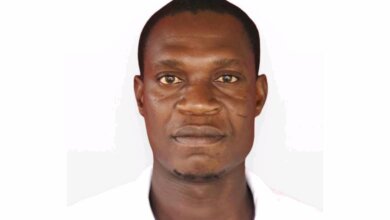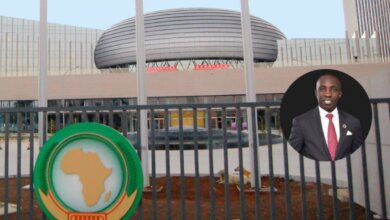Africa’s Heritage is Humanity’s – and it’s been overlooked for too long | Sada Mire

As an archaeologist, I am hoping my new project will connect the continent’s people to the hidden history of their land.
In my first class on an archaeology course at Lund University in Sweden, I stood out more than usual. It was not just that it was full of blond and blue-eyed students, more than in any other class I had ever attended – it was that archaeology is not a field that many migrants study.
My teacher and classmates were lovely, yet I still had this feeling of “What am I, a Somali refugee, doing here?” Furthermore, I had never even seen an archaeologist before, or held an archaeological object. But I had read a sentence in a book (Africa: history of a continent, by Basil Davidson) which said that to write African history we need to do archaeological research.
As this first class was on European stone age archaeology, stone implements were handed out. An axe was passed to me. To my astonishment the label read “Somaliland”. Wow: an axe from my own country. The moment was like a message. It was as if someone was saying to me: “Yes, you belong in this classroom”.
I bombarded our teacher with questions about the axe. He had no idea where it was from – he did not seem to care. Why would he? Stone age artefacts are mostly the same. No, he did not think there was any further documentation: only that they were palaeolithic objects.
I later discovered that these objects were extraordinary. It turns out the axes were in fact history-making implements, taken out of my country in the exciting days when the idea of human evolution was taking shape.
Fast-forward 20 years from that day in Lund and I’m creating a new global initiative, a digital museum to bring together in one platform all Somali objects and materials. I want people across Africa to feel the same connection to the subject as I did.
In archaeology, context is everything: if your bones are found with those of extinct bears and mammoths, then you’ve probably been dead for tens of thousands of years and are most likely not even a Homo sapiens. In 1856 the first Neanderthal was discovered in Neander Valley in Germany. The Neanderthal would understandably not have liked to be thought of as the only link between modern humans and the great apes – they were too sophisticated. So it must have been a relief when, in the 1890s, Homo erectus came into the picture.
Read Also: Sudan’s Forgotten Pyramids are more than Egypt’s
The Java man, as this find came to be known, was labelled the “missing link”. Soon this “upright-ape-man” was joined by more hominids discovered in Asia. These discoveries reinforced the theories of Charles Darwin, first set out in 1859 in On the Origin of Species, and his idea of natural selection gained more ground. This was further evidence for the idea that humans had evolved from one common ancestor.
Archaeologists didn’t bother to look to Africa until 1896, when Heywood Walter Seton-Karr, a Scottish game hunter, returned to London with hundreds of stone implements from British Somaliland. He proclaimed, to global attention, that he had found the garden of Eden: “Here it was, in my opinion, that the human race originated.” Major museums – one of which must have been the Lund natural history museum – lined up to acquire Somaliland artefacts, including stone tools. More discoveries on the continent followed, such as Kenya’s “Turkana boy” or Ethiopia’s “Lucy”.
I have spent the past year surveying the same area where Seton-Karr stumbled on the stone axes. I asked village elders about him, hoping for some lingering generational memory. And though the name did not ring a bell – why should it – they told me the Ingriiskii (the British) used to come looking for macdan (gems) here. Often, foreign archaeological missions failed to tell the locals what they were really doing – indeed sometimes this still happens. The village chief vowed to me to protect his area, which also includes newly located 5,000-year-old rock paintings.
By uncovering the hidden history of African collections long forgotten in museums in the west, the founders of our new archive have unearthed a wealth of art, technology and human history. With the application of technology, things of the past can come alive – through photogrammetry and 3D virtual tours – and feel more relevant to modern-day societies.
We are collaborating with major western museums that hold African collections, including a number of UK institutions (the British Museum and Powell-Cotton Museum among them). But with all our digital work being carried out by African local teams, we are tapping into a new tech-savvy generation. The idea is to inspire Africans to be the owners of their heritage and its narratives.
This is not just about the past. Our fast-growing demands for goods have put huge pressure on climate and resources and also made us forget our traditional ways of resource management and interacting with nature.
Read Also: Africa’s Approach to Wildlife Conservation Needs to Change
One of the most extraordinary individuals we worked with was a blind potter. She had been trained by her mother who was in turn trained by her mother. Now she was with her own daughter who was training her daughters. This lineage of female potters will die out after surviving so many adversities just because so many people now opt for machine-produced pottery and imported plastic goods.
Our museum aims to revitalise craft technologies such as pottery and iron-making. With objects often locally neglected, or forgotten in the storage departments of major museums, this heritage is at risk for the first time in history. If we do not bring together the people and stories that reflect what is most beautiful about human life – the ability to adapt to change and challenges – we may well lose sight of humanity itself.
WRITTEN BY: Sada Mire—an archaeologist and incoming associate professor of heritage studies at UCL Institute of Archaeology. She is author of the book Divine Fertility | TheGuardian
Abeeb Lekan Sodiq is a Managing Editor & Writer at theafricandream.net. He is as well a Graphics Designer and also known as Arakunrin Lekan.





